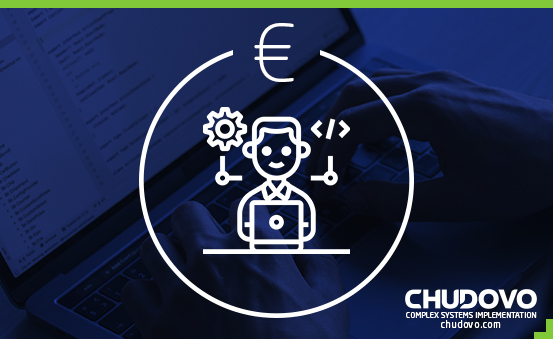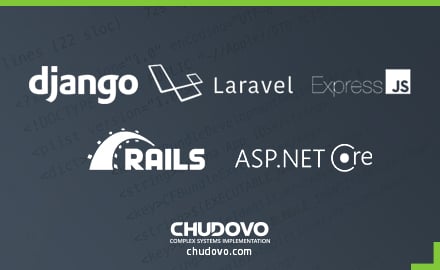How to Write a Best Request Proposal For Software Development
The high costs of maintaining an in-house software development team to build software products have made businesses realize how important it is to outsource product tasks. The first step to outsourcing your software product development is putting together a software Request For Proposal (RFP).
A request for proposal software development is a document containing all the necessary information a software company would need to know before bidding to work on your project. The success of your outsourcing process would depend on the quality of your request for proposal software development.
So how do you write the best software request for proposal (RFP) document? This article will guide you on how to write a partnership proposal for software development.
Table of contents
What Is A Request For Proposal for software development?
A request for proposal for software development is a document that describes in detail a project that potential vendors or software development companies can bid to work on. It begins the hiring and partnership process to temporarily contract a software development team.
The more complex the project is, the more details are required for the vendors to understand what they’re getting into. Wrong or inadequate description of the project parameters and problem would result in bidders not proposing accurate solutions and figures for your project.
What’s the general process for using an RFP?
Generally, the process for using a request for proposal software development document to achieve your product goal is this:
- Create the document
- Publish publicly or privately
- Review the proposals
The first step is to create the RFP document. You should already have everything figured out concerning what this product should be, the problem it solves, and how it solves it. Make use of RFP examples for software development or make a consultation with those who can write it for you.
Next, publish it publicly or send it to private groups. Once you’re sure everything the developer would need to know is contained in the RFP document, send it out to potential bidders. You can decide to publish it publicly or send it to a few vendors who might be interested in working with you.
Lastly, review proposals and decide on a winning bid. The last step is to review the bids and make a decision. It’s usually better to attach metrics to your expectations and grade those proposals. That way, you can simply pick the top vendors that scored the highest.
What are the benefits of using a Software Request For Proposal?
Aside from helping you save time and costs, outsourcing your software development needs by using a request for proposal for software development document will bring you the following benefits:
- Better product understanding: Knowing how to write request for proposal will familiarize you with your project anew. Understanding your product is the first step to communicating your vision to potential software development teams in your software request for proposal.
- Higher accuracy in project estimates: The specific information contained in an RFP is what companies will use to estimate their budget. Without it, bidders will only provide uninformed guesswork.
- Help you get the best team onboard: With a detailed software request for proposal complete with project requirements and selection criteria, it’ll be easier to judge the proposals and know which of them is best for your project.
- Saves time: Request for proposal for software development will help you save time by eliminating the need to answer the same questions about your project over again.
Request For Proposal RFP Template for Software Development
An RFP template for software development consists of the following sections:
- Executive Summary (Project overview and company description)
- Project scope and deliverables
- Technical requirements
- Project timeframe
- Budget details
- Format for bids
- Selection criteria and review
1. Executive summary
This section contains the project overview and the company description. The project overview should describe, in simple terms, the current state of the product, whether it’s still an idea or in development. This would let the vendors know what stage they’re coming on board.
Ensure your project overview mentions your target audience, restrictions, software requirements, and project goals. When outlining your project goals, simply state what quantifiable business goals you want to achieve and not the technical aspect.
After that, provide a short company description of the mission and values of your company. Who is your target audience, and how will this project help you achieve long-term goals?
You might be the one seeking vendors, but even the vendors are assessing you for business relationship compatibility. Hence, you must ensure your request for proposal for software development helps the vendors understand who you are and what you stand for. They’ll come up with solutions that align with those values and business goals.
2. Project scope and deliverables
This section of your request for proposal for software development document should be your most detailed. It outlines every part of your project requirements and what the project covers. The vendors will use the information you provide in this section to provide cost estimates.
Look out for software development proposal example to help you craft the following subsections:
Project management deliverables
The first thing is to decide who will manage the team. Would the vendors come with a project manager, or will you do it yourself? The project management deliverables section of your software request for proposal should basically outline how the team will be managed regarding communication and methodology. Under communication, determine how communication will flow between you and the software development team. You should both know what medium to communicate with and when you should expect updates, and how they should keep you informed with every step of the project.
Then determine what methodologies the team will implement. This can be Agile, Kanan, or Waterfall. And whichever one you choose, ensure your team is comfortable and familiar with the project management tool.
Infrastructure requirements
Specify what software infrastructures your project would need. This would prevent any vendor who doesn’t meet those requirements from applying and stalling your release dates when they can’t meet up with deadlines and deliverables.
When it comes to security, the team must include spam protection, SaaS security, network security, Intrusion Prevention System (IPS), network attack blocker, and domain-level-managed antivirus software. Aside from these, the vendors responding to your RFP must have security measures like uninterrupted power supply and backup generators when the power may get interrupted.

Certified engineers
Convenient rates
Fast start
Profitable conditions
Agreement with
EU company
English and German
speaking engineers
In addition, include a provision for legal documents like NDAs and contracts in your software request for proposal document. These would ensure your software’s intellectual property rights are protected against theft and misuse
Functional requirements
What functions will your product have? Enumerate these in connection with the specific problem and their benefits. The functions should consider the following factors: user, product, optimization, object or characteristics, and process.
Let’s say you’re building an online marketplace for ordering items online. An object or characteristic function that must be included is that every order must have the biodata of the user along with address, mode of payment, etc.
A functional requirement for a software development proposal example for a user-oriented function would be a feature that allows users to add items to a cart without having to visit another page or go through an additional window. It should save the user time and energy by being a one-click function.
While this section may not be compulsory in some RFP examples for software development, it’s important to note that it’s crucial nonetheless. If you don’t list it, do specify that the software development team can figure out the functions. All you’ll need to do is state your business goals, but this service would come at an extra cost.
QA (Quality Assurance)
As the title says, this section should state how a quality product would be ensured. The aim should be to increase quality while simultaneously reducing errors found within the product. Without this section in your software request for proposal, you would have a software solution full of bugs and errors that will dampen your user experience.
Quality assurance is made certain through various tests. Not every project can use the same type of test, and that’s why it’s important to understand your project requirements and choose the test that best ensures you have a quality product.
Platform Requirements
Every project does not belong on every possible platform. Sometimes, it could be because you cannot afford the reach or because your target audience doesn’t convene on those platforms. That said, to get optimum results, you must specify which platform your product should be implemented on.
Is it a web, android, or iOS-based product? Consider your budget, available time, and target audience, and specify on your software request for proposal which you want.
The more platforms, the higher the cost. Maximize your resources by choosing the ones where you’ll reach your target audience more.
3. Project Timeline and Time Frame
Your project timeline and timeframe section specifies how long the software team would have to work on the project. As you learn how to write partnership proposal, ask yourself when you want to launch the product and how long it would take, and when the team would start working.
Answering these questions as honestly as possible would help you determine when each step of the process would take place. Use this information to set realistic timelines. It’ll also help you to not overshoot your expectations, especially if you have a shorter time frame to work with.
Note that a shorter than normal or longer time frame might mean higher costs. But that depends on your project requirements and scope. Once you’ve decided how long the project would take, set the project timeline with the necessary deliverables and deadline dates for delivery.
This information is helpful to the vendors for determining the number of specialists to assign to your project and the specialties or skills they would need to acquire. They would also need it to determine an overall budget.
4. Budget Details
The budget and finance sections state the price range of how much you’re willing to spend on realizing this project at each stage. Specify if you are open to negotiations on your budget and if the vendors can bid for higher or lower amounts. When writing this sections, make a consultation with experts to determine what the best esitmates should be.
This section is compulsory for two major reasons. Firstly, it sidelines any vendor with a higher budgetary requirement and those who may bid lower, thinking that cheaper is better. Secondly, it gives the software team an idea of what services you can afford and at what level.
Some options can cost cheaper or higher, based on the product features. The developers can also propose substitutes for the more expensive requirements and help you see how to achieve those features without breaking the bank.
5. Selection Criteria, Evaluation and Review
This section provides information on what is required from the vendors and what marker’s you’ll use to evaluate companies. What should they include, and what shouldn’t appear in the bid? Being as specific as possible in this section will help you choose the best for your project.
As regards the bidding format, your company can use this software development proposal example bidding format below:
- A description of the software development company
- An overview of their development team
- Process and procedure for projects
- Project plan and ideas for execution
- Technical plan
- Budget and expenditure estimates
- Conditions for intellectual property ownership and rights
- Suggestions for project improvements and functions not mentioned within the request for proposal document
- Testimonials and reviews from previous clients
Key Takeaways For Writing A Request For Proposal Document
Writing a request for proposal document from scratch, especially for the first time, can be daunting. However, this guide has provided some useful help in writing the best RFP document for your project. Here are a few key facts to note as we round up:
- A Request For Proposal document outlines the specific needs of a project and is sent out to software development teams to use in bidding to build that project.
- Emphasize documentation to help ease the process of changing teams and revamping your software in the future.
- Be as precise as possible and avoid vague statements.
- Technical requirements aren’t necessary, however, they would help you sieve out unbeneficial proposals.




